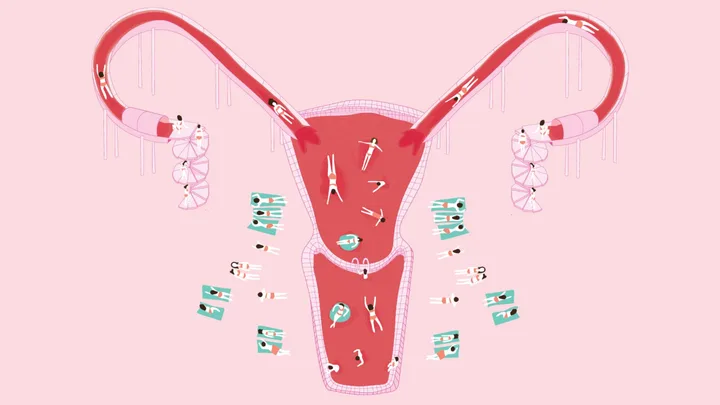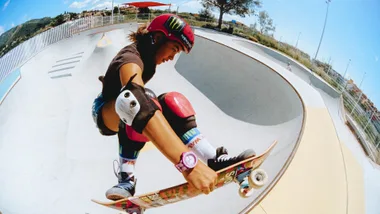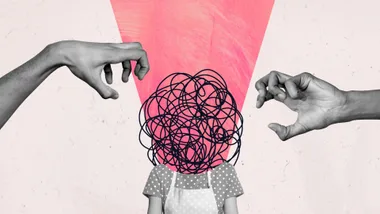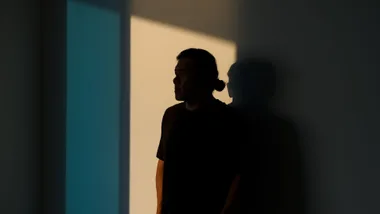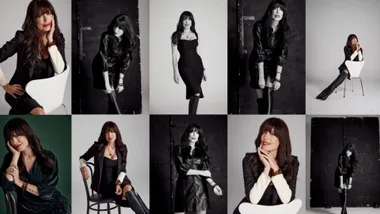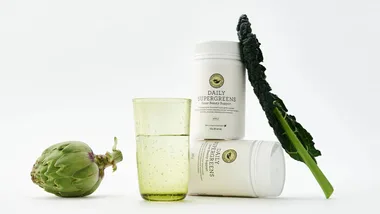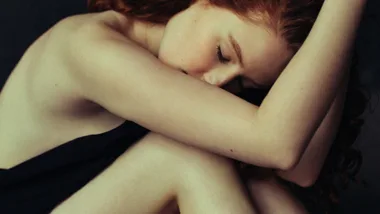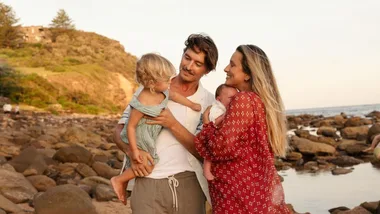Madison Griffiths thought her best friend was lying when she said she’d orgasmed during sex. “I got a bit frustrated, like, ‘Cut the bullshit, this is me you’re talking to!’” she says now, laughing at the memory. Madison thought sex was meant to be unpleasant for women – it was meant to hurt, even. “I’d always had painful sex as a teenager, and I never once considered that to be not normal,” she says.
That conversation proved the catalyst for what would turn out to be a long and distressing journey into the source of her pain. “It took eight years for me to be diagnosed with vaginismus,” says the 30-year-old author (her book, Tissue, was published by Ultimo Press last year).
It’s a condition in which the pelvic floor muscles involuntarily spasm in response to vaginal penetration, meaning tampons, pap smears and penetrative sex can be excruciating and even impossible. (Fans of Sex Education will remember Tanya Reynolds’ character, Lily, dealing with the same issue: “My vagina’s like a Venus flytrap,” she says.)
Like much of women’s pain, little is known about vaginismus, which meant Griffiths’ quest for answers was met with scepticism and even inappropriate testing.
“I was readily dismissed at every corner. One gynaecologist suggested a pap smear, and I was like, ‘I absolutely cannot do that,’” says Griffiths, who eventually discovered that treatment involves physical and psychological therapy.
Eight years is a long time to be asking for help, but a long diagnostic journey is an unfortunate reality for many women. In fact, it’s so common that it has a name: the gender pain gap. The phenomenon falls under the umbrella of medical misogyny and refers to how a woman’s pain is more likely to be poorly understood and mistreated because of gender biases.
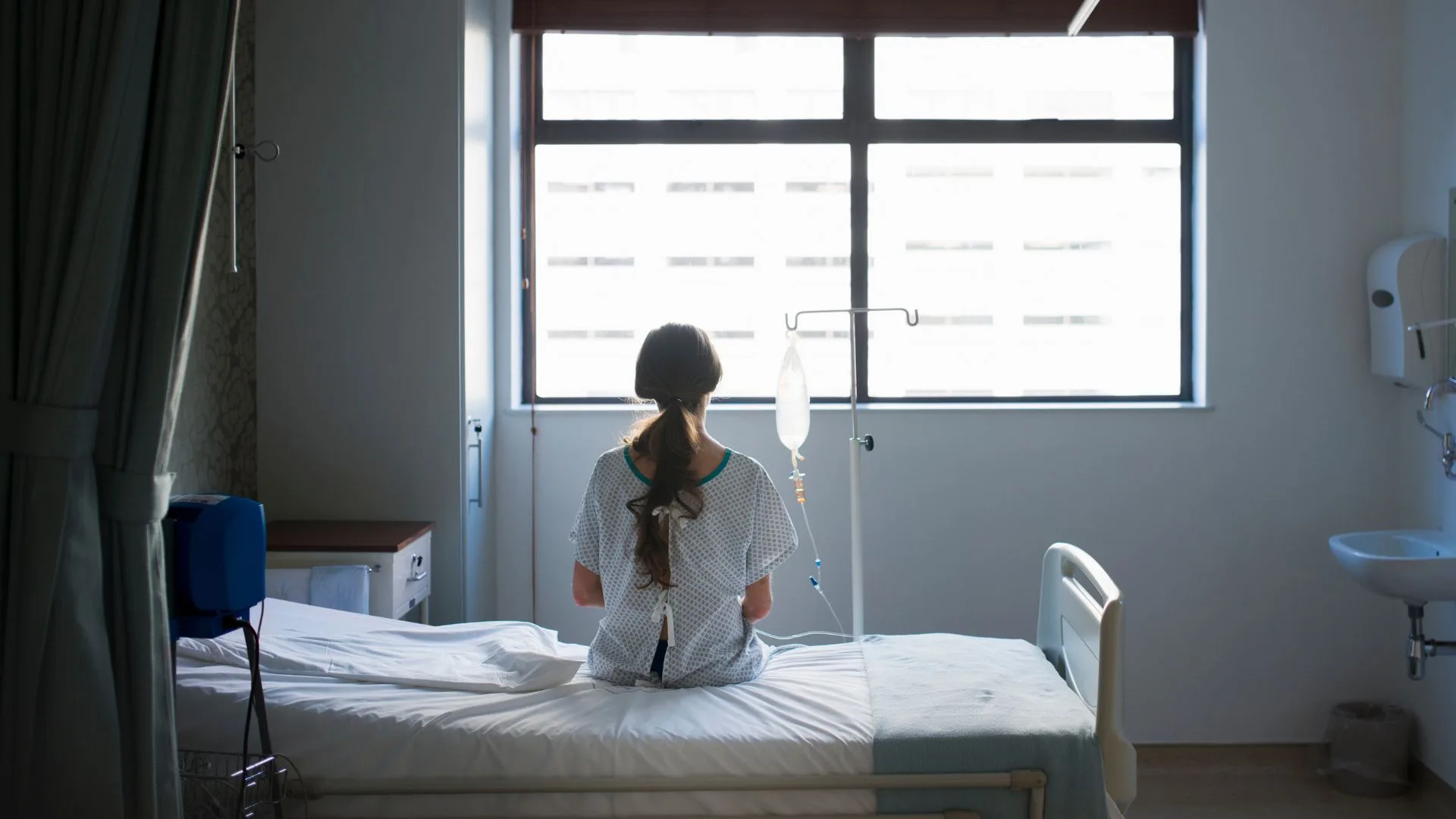
Earlier this year, Nurofen released its Gender Pain Gap report based on the findings of a survey of more than 2000 Australians.
More than half of the female respondents said they believed there was a gap between genders when identifying and treating pain (35 per cent of men thought the same), and 21 per cent of women reported having waited more than 12 months for a diagnosis for their pain, compared to just 13 per cent of men who reported the same.
Dr Bill Laughey is Nurofen’s in-house GP and the senior medical scientist at its parent company, Reckitt. He worked on the Gender Pain Gap surveys in the United Kingdom (2022 and 2023) and Australia (a second report is due in September).
The surveys in both countries “showed the same pattern, that women are more likely to be dismissed”, he explains over Zoom from England, where Reckitt’s Pain Team is based.
While multiple factors contribute to the gender pain gap, the most insidious are gender biases, both blatant and unconscious. Forty-nine per cent of Nurofen’s respondents who believe
the gender pain gap exists said women aren’t taken as seriously because they are viewed as “emotional”.
“People see women as being hysterical but see men as stoic, so for a man to be in pain it must be really bad,” Laughey says. “People make corrections in their heads when they hear a pain story. For women, [they] bring it down a bit: ‘Oh, you’re saying a seven out of 10? It’s probably a five.’ And for a man, there’s the temptation to add one on. It’s such an unfair contradistinction. It’s a bias, it’s not a fact.”
Dr Marieke Bigg, the author of 2023’s This Won’t Hurt: How Medicine Fails Women, says, “Pain is a very subjective experience, so you’ve got to go by people’s reports. When women in society at large are already discredited, and you layer on top of this biological and medical myopia, you get a situation where women are not easily heard.”
That bias is preventing women from seeking help: 44 per cent of Nurofen’s female respondents who reported experiencing pain said they felt like they would be judged or seen as a whinger. But those who do seek help face another barrier: a lack of knowledge about women’s pain. “Even when women raise concerns, they are often met with blank stares from doctors,” Bigg writes.
This article is not an exercise in doctor bashing. A GP with the best intentions may still reach the end of the line purely because the science isn’t there. Bonney Corbin is the chair of the Australian Women’s Health Alliance. She says well-intentioned GPs have unfairly become targets of criticism.
“The drop-out rate of GPs is quite high, and rates of depression and suicide are also high,” she says. (A 2023 study found that health professionals were 30 per cent more likely to die of suicide compared to other occupations.) Women have historically been left out of medical research (intersex, trans and gender-diverse people are often excluded entirely).
It was only in 1993 that America’s Food and Drug Administration (FDA) lifted its 1977 ban on women being included in medical trials. As such, the science that informs medicine comes from a “male as default” approach (specifically, a 70-kilogram white male).
Women are less responsive to anaesthesia and ibuprofen, and in 2013 the FDA cut the recommended dosage of Ambien for women in half.
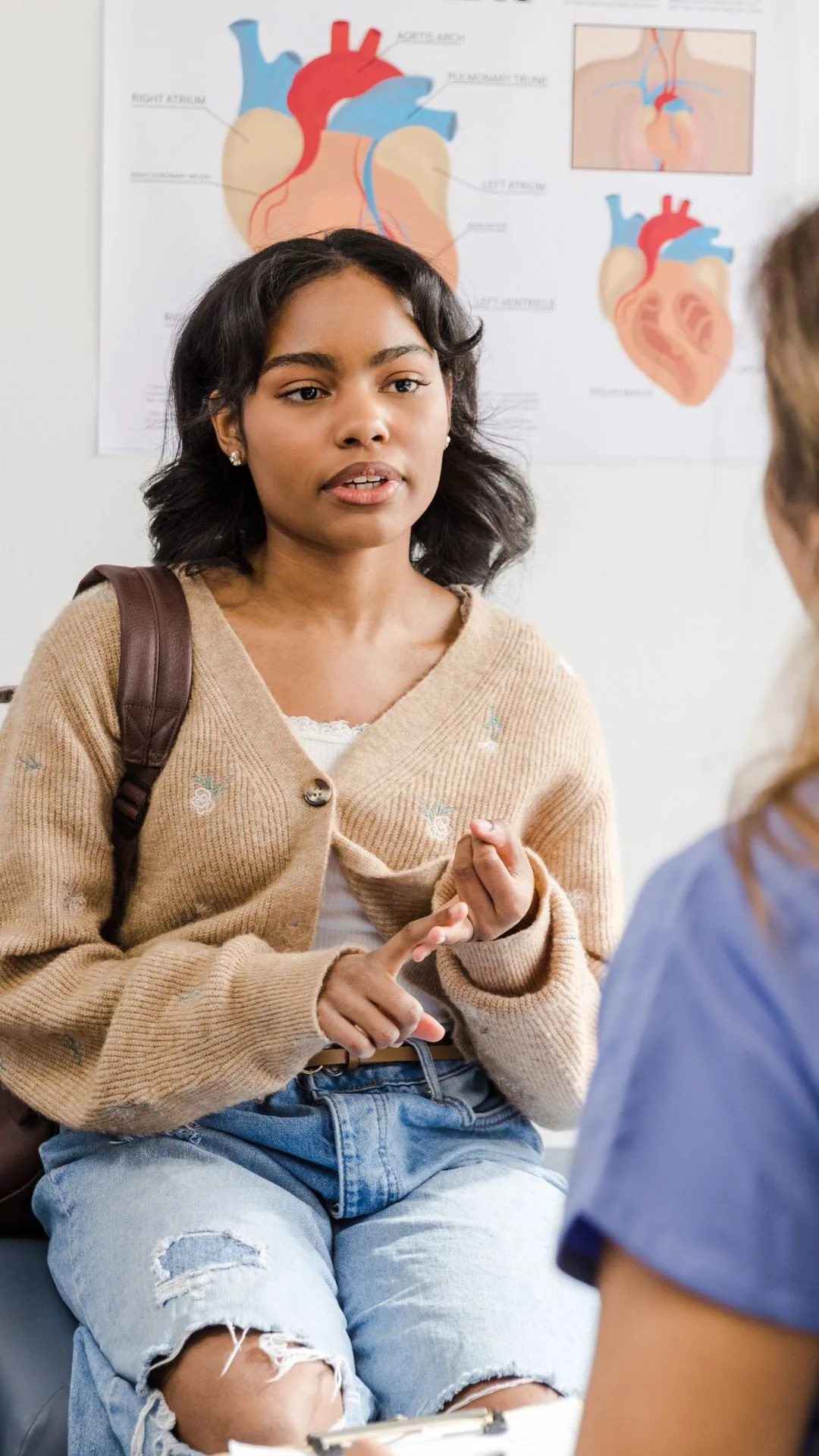
Still, many people see pain as a normal part of a woman’s life. Griffiths says this belief played a huge part in her diagnostic delay. “When I say it took eight years to be diagnosed, it probably took me almost that long even to realise this was a pain worth interrogating,” she says.
“There’s this implicit belief and acceptance in both patients and medical professionals that when women are in pain, it’s just something you accommodate for. It’s nothing to be taken seriously.”
Nurofen’s findings back her up: of the people who believe the pain gap exists, 46 per cent say it’s because women are expected to suffer pain. “Certainly with female-specific pain, there’s an underlying assumption that because it’s – in inverted commas, ‘normal’ – you should tolerate it,” says Laughey.
It took nearly 20 years of debilitatingly painful periods for Sydney artist Em Hatton, 32, to get an endometriosis diagnosis – the condition in which tissue similar to the lining of the uterus grows in other areas.
“I used to miss a few days of school every month; I would be physically unable to walk because of the pain,” she says. When she was 14, Hatton went on the pill to manage her symptoms, but plunged into a deep depression.
A decade later, she decided to come off it. “It was this choice: Do I want to deal with crippling pain a quarter of the time or crippling depression most of the time? I realised I preferred to feel the pain and try to manage it from a better headspace.
“You’re just constantly feeling dismissed,” she adds. “I had a doctor tell me, ‘You have unexplained pain syndrome; I don’t know what more we can do for you.’” To raise awareness of the gender pain gap, Hatton has curated an exhibition at Uno Studios in Sydney (November 3-5) by artists who were assigned female at birth who have had chronic health issues.
Melbourne-based creative director Veronika, 31, is still living with trauma from the birth of her son in 2021 and the return of her period a year later. She experienced a “difficult labour” that resulted in an emergency C-section, being separated from her husband and two panic attacks. A year later, once her periods came back, she noticed they were heavier than they used to be.
“Every doctor told me it was normal, but I just knew it wasn’t the case,” she says. She wanted to return to work but wasn’t physically ready. “I knew I would have to take days off every month because I was bleeding so much and in so much pain. I was sick all the time from losing blood. The doctors told me I was sleep-deprived.”
Avalon, 31, a student nurse in Sydney, was assumed to have chronic UTIs when she was passing blood clots in her urine. “I started getting the pain when I was 18 or 19, and I was consistently being given antibiotics after antibiotics until about two years ago,” she says.
That’s when she was diagnosed with interstitial cystitis, a chronic and painful bladder condition that has nothing to do with infection.
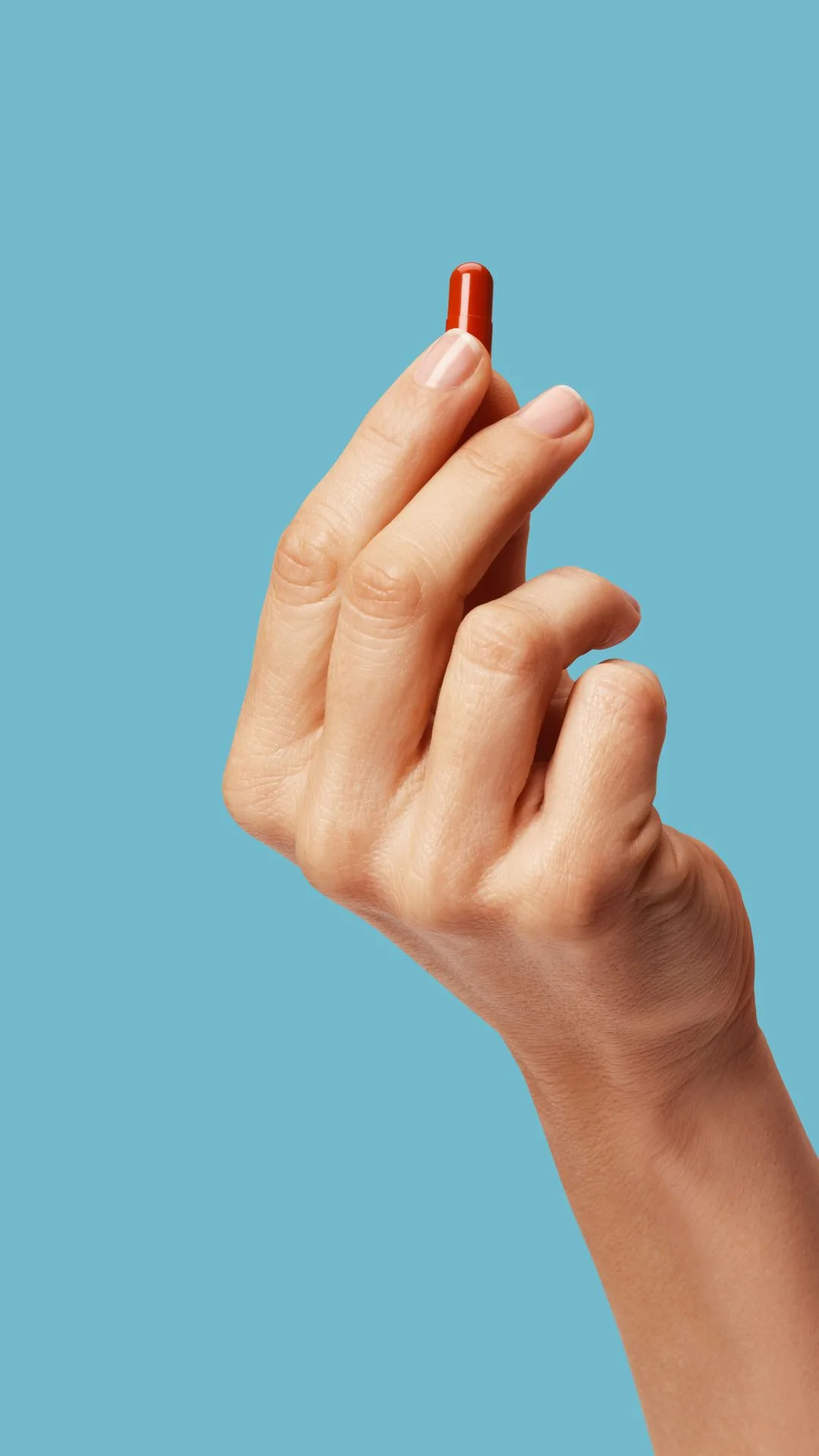
Women’s health goes beyond “the stuff hidden behind the bikini line”, says Dr Sarah White, CEO of the national not-for-profit organisation Jean Hailes for Women’s Health. Women are more likely than men to experience headaches, abdominal or stomach pain and sinus pain.
In Australia, women make up 71 per cent of migraine sufferers and up to 80 per cent of people with chronic fatigue.
They are also more likely to be affected by autoimmune diseases that often come with debilitating pain, such as multiple sclerosis and arthritis. Research also shows that pain has a more significant impact on women’s daily lives compared to men, impacting their sleep, careers, friendships, familial and romantic relationships, and general mood. “It’s never just pain,” says Laughey. “It’s always bigger than that.”
Sarah Fehlberg, 41, a naturopath on the Central Coast of New South Wales, was a busy working mum to an 18-month-old when she was struck with intense nerve pain. “Every day,
it’s like someone has a blowtorch on my arm,” she says.
She went to hospital twice in “excruciating pain”, and was given “medications that didn’t take the pain away at all. They numbed my head and my body so much that I had to stay in bed for months on end,” she says. On her third trip to the emergency room, an MRI found lesions on her spine.
“They said, ‘It’s like you’ve been hit by lightning.’” She was told she’d be fine in a few months. “I was crying in my specialist’s office four months later, saying I couldn’t live like this, and all he did was prescribe me an antidepressant.”
While it’s true that pain and poor mental health often go hand-in-hand (chronic pain-related depression is twice as prevalent in women than men), women are more likely to be medicated for mental rather than physical health.
A 2023 study into postoperative pain management found that after undergoing joint surgery, men were more likely to be prescribed opioids, while women were more likely to be prescribed antidepressants.
Ged Kearney, the assistant minister for health and aged care, was a nurse for 20 years before moving into federal politics. “In post-surgery I would observe that if a man was in pain, he would be treated and receive all the sympathies you would expect for someone in pain. But if a woman was in pain, she was more likely to be told she was anxious,” she recalls.
It’s a self-fulfilling prophecy, says Dr Melissa Catanzarite, the lead doctor at the Victoria-based women’s telehealth clinic Hazel Health. “Women with untreated chronic pain who are being told they’re just depressed or anxious actually become depressed. You can fix both by addressing the physical pain, but we’re forcing them into an avoidable depressive state.
“There’s an added layer of complexity when you’re a person of colour,” she continues. “Black women who present with chronic pelvic pain have significantly worse outcomes than an affluent white woman, while women from immigrant backgrounds have to jump through more hoops to get more consistent care.
So there’s [the disparity of care between] men and women, and then there’s that intersectionality of womanhood.”
Tracey Brand, an Eastern Arrernte woman and the CEO of Derbarl Yerrigan Health Service, says Aboriginal women face significant barriers “in accessing mainstream services, [due to a lack of] culturally safe care, shame, stigma and a lack of trust in the health care system”.
As a result, they experience “significantly higher rates of gynaecological cancers and lower survival rates”.
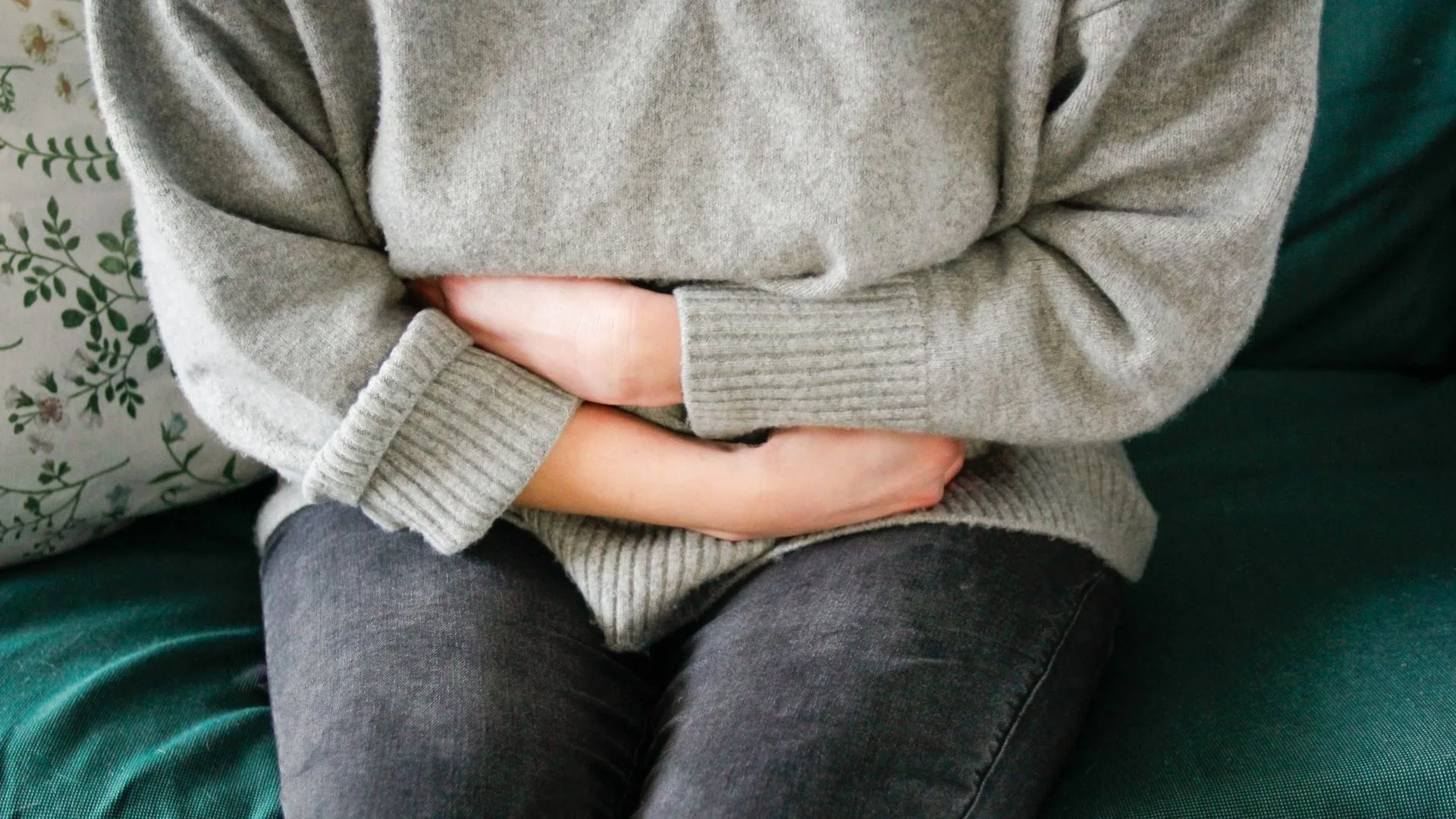
The pain gap is also amplified at the intersection of gender and disability. “Practitioners might discredit reports of pain as related to the patient’s known disability rather than [it] initiating the cause of pain,” says Sophie Cusworth, the acting CEO of Women with Disabilities Australia.
That’s the case for Leanne, 51, from outer Brisbane, who lives with a disability and has difficulty accessing pain relief for stage-three lymphedema, a debilitating chronic swelling of the arms or legs. In her attempts to get help, she says she has been accused of being a drug addict rather than being understood as someone trying to live “a life with a lot of pain in it”, she says.
Age also widens the pain gap. Kearney recalls a conversation with a 70-year-old woman. “She told me she was experiencing pain during sexual intercourse, and her GP just basically laughed at her and said, ‘Well, you’re 70, of course sex is going to be uncomfortable.’ He didn’t even examine her, and she felt humiliated. The pain continued until she went to hospital with a ruptured appendix.”
In early 2023, the Australian government appointed women’s health experts to a new National Women’s Health Advisory Council (NWHAC), including Kearney as chair and White and Corbin as members, to advise the government on the health-system challenges women and girls face.
Their #EndGenderBias survey showed that medical gender bias can lead to “feelings of abandonment, shame, blame and self-doubt; significant financial burden, lost educational and career opportunities; delayed diagnosis and treatment leading to disease progression; ‘near misses’ where dismissed health concerned turned out to be life-threatening; and giving up”.
So, what to do? For Corbin, it’s about rallying and ensuring women are in positions of power. “We need to keep the momentum going and have more young women feeling empowered to make noise about the pain gap.”
Nurofen is donating $200,000 to Jean Hailes for research into women’s health and has also developed the Pain Pass for patients. “It’s about reminding people that if they don’t think they’re being heard, they can just pause and try to make their point in a different way,” says Laughey. “It won’t work every time, but change isn’t going to happen by accident. The bias is so ingrained, it’s going to be a long and big fight.”
If this story raises issues for you or for someone you know, you can call Lifeline anytime on 13 11 14.
